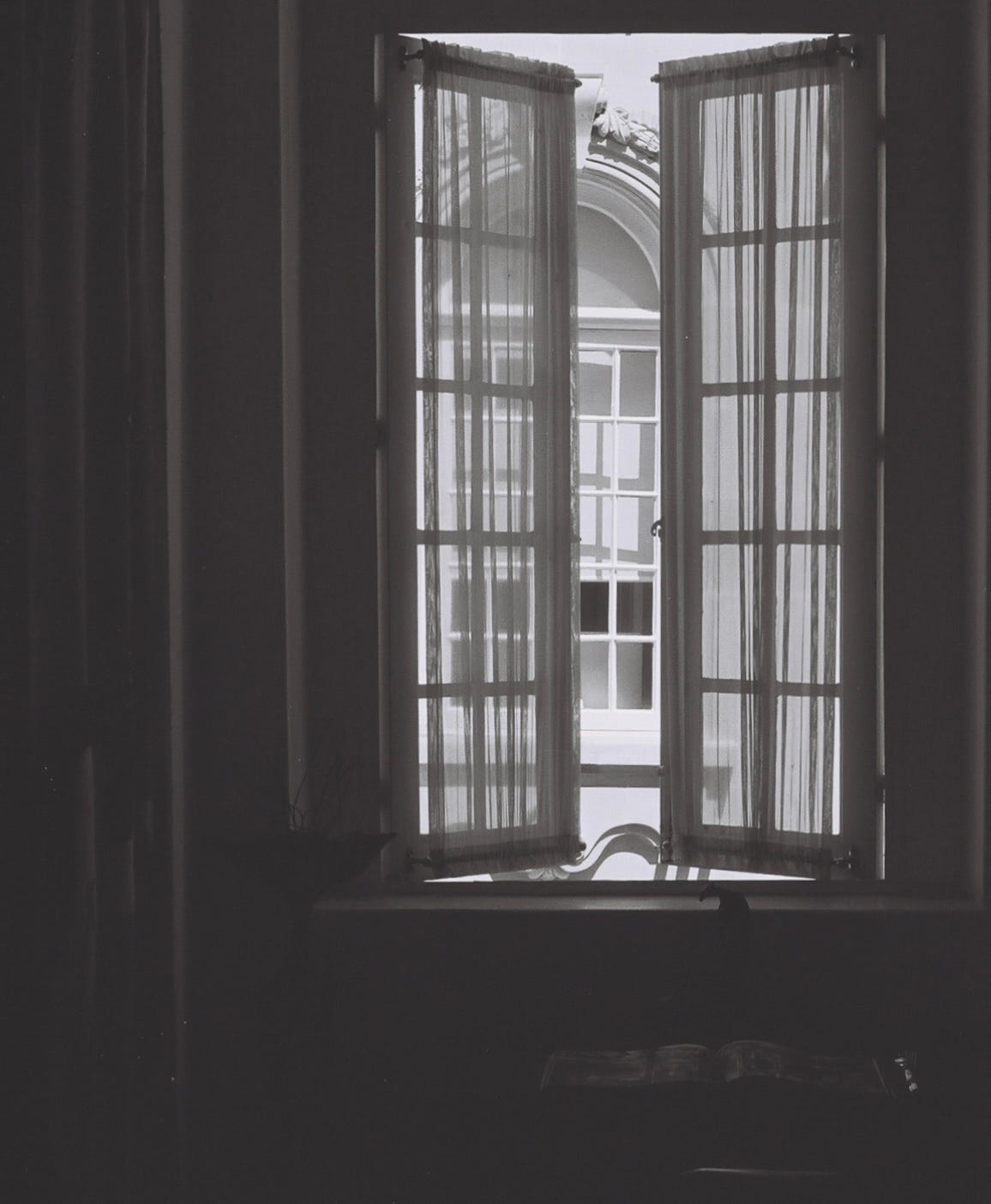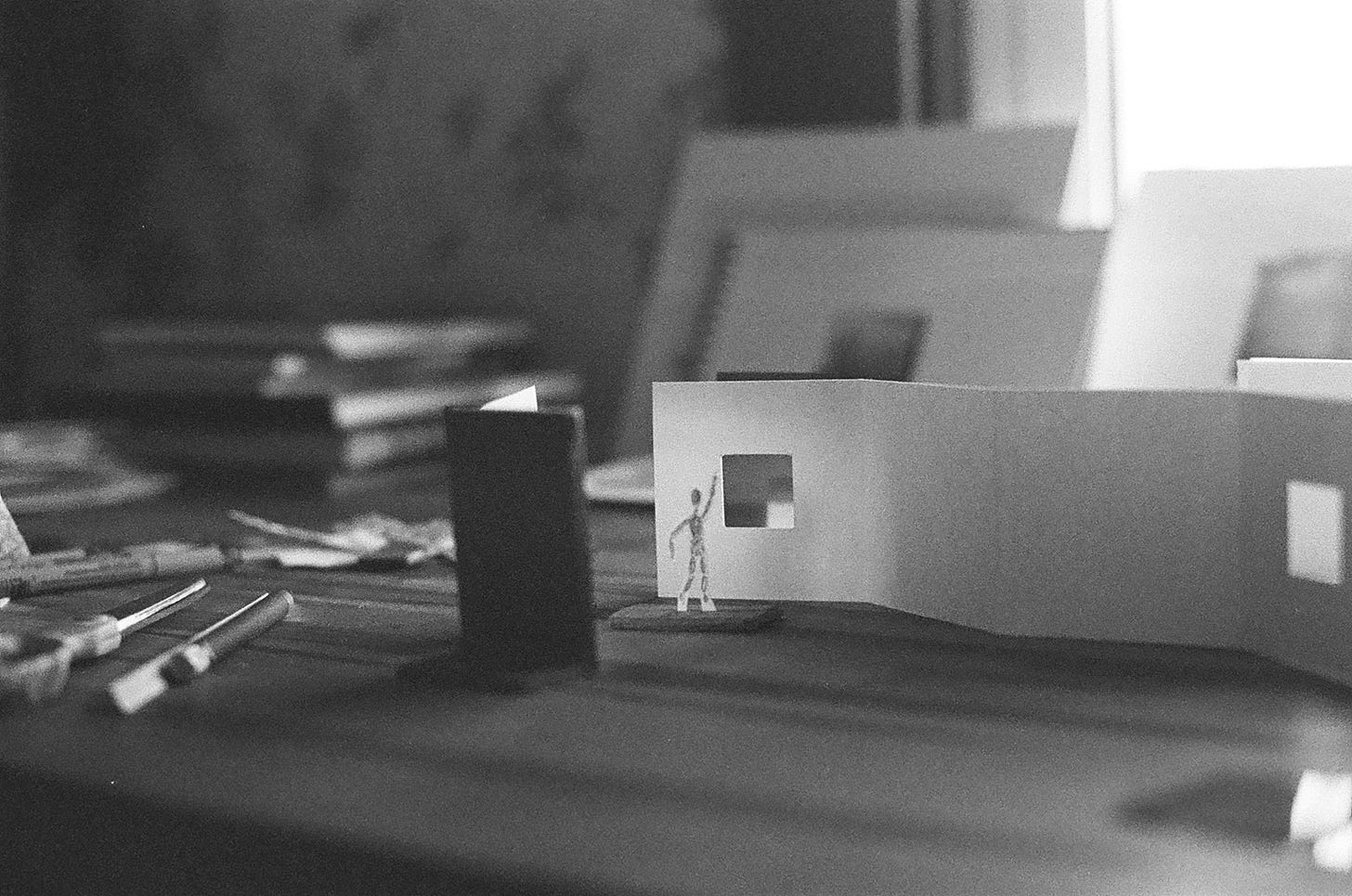The Body is the Site of Your Experience
Somatics is the study and practice of embodied awareness. In modern Western cultures that often prioritize production over presence, it can be a significant paradigm shift to recognize the body not merely as a physical object, but as a living process of perception, meaning-making, and knowing.
Experience design, when infused with somatics, becomes body-centered. It attends not only to what someone sees or hears, but what they feel, sense, and become inside an experience. It focuses on the environment someone interfaces with, and the potential states of being it elicits.
Traditional experience design practice may begin from: what do people do?
Somatic experience design asks: What do people feel in their nervous system, in their breath, in their being — and how does that shape what’s needed and possible?
As experience designers, we must recognize our role in either sustaining maladaptive patterns or co-creating more vital, life-affirming ways of being. We cannot simply take what people are already doing, needing, or desiring at face value. Many of these impulses arise from trauma-induced adaptations, internalized capitalism, and cultural conditioning. If we design solely from a human-centric lens, we risk reinforcing patterns of disconnection, extraction, and over-consumption that work against the deeper intelligence of living systems.
Somatic experience design asks us to widen our perception: to listen beneath surface-level behaviors and preferences, to attune to what the nervous system, the body, and the Earth are truly asking for. It invites us to craft experiences that regulate rather than stimulate; that reconnect rather than distract; that align with the rhythms of nature rather than the compulsions of performance. In doing so, we become stewards of transformation, shaping conditions where more regenerative, relational, and embodied ways of being can take root.
Instead of Designing for Interaction, Design for Transformation
Somatics works with and enables transformation. By attuning more deeply to the body, we gain access to the possibility of shifting from habituated, unconscious patterns into new, life-giving ways of being. All of our stories — our traumas, joys, and longings — live in the tissues and waters of the body. Memory is not just cognitive, it’s somatic. Our subconscious beliefs, protective patterns, and formative experiences are encoded in our physiology, often outside our conscious awareness.
Trauma can be understood as a moment in time that gets caught in an eddy, a swirling loop within the flowing river of our consciousness. Rather than moving downstream, the experience repeats itself in the background of our lives, often showing up as anxiety, numbness, reactivity, or disconnection. Healing occurs when we consciously create space to feel, witness, and integrate these trapped experiences, not to fix or erase them, but to allow them to rejoin the river. When energy begins to flow again, the system can reorganize. A flowing river oxygenates, nourishes, and purifies. So too does the body, when given the right conditions.
This is where experience design becomes a potent vehicle for healing. When informed by somatics, experience design offers not just moments of insight or inspiration, but ritual containers for remembering. Through intentional environments that bring forth movement, sound, relational presence, and sensory cues, we can invite the body into new experiences of safety, connection, and expansion, ones that gently dislodge old patterns and make space for new ones to take root.
Just as the body can store grief, fragmentation, and fear, it can also record joy, courage, resilience, intimacy, and compassion. When we design experiences that invite people into authentic, embodied encounters with these qualities, we help generate new somatic imprints, a living archive of memory that supports healing and future possibility. In this light, experience design becomes a form of medicine: not just about what happens during the event, but what is awakened in the body. And, what flows on long after the moment has passed.
Slow Down and Attune
Somatic practice emphasizes moving through resistance by slowing down to sense and track what is arising within oneself and outside of oneself, while also noticing the relationship between the two. This capacity is crucial in designing meaningful experiences, both inside of the design process and the experience itself.
When we design inside of compressed schedules and tight deadlines, we often bypass the subtle invitations that could lead to more meaningful, resonant experiences. We miss opportunities to linger, to notice, to receive insight. For example, maybe there’s a certain hour when a room we’re designing an installation within is illuminated by the light of the setting sun, a beautiful moment that you can co-create with to generate a sense of wonder or awe. If we’re rushing towards an outcome, we might overlook the unexpected inspiration that emerges on a walk through the forest, like stumbling upon the sound of thousands of ants rustling through leaves, a sound that could inspire an entire soundscape. In other words, we have to be embodied in the present in our design process if we want to generate more presence and embodiment through what we produce.
Too often, we unconsciously sabotage our present-moment experience in service of a future one, especially one that is meant to be consumed, approved of, or validated by others. We rush toward visibility, completion, or success, bypassing the very state we’re hoping to cultivate in others in ourselves. The truth is, how we birth the work shapes the field it will carry. We must periodically pause and ask and ourselves: Am I creating from wholeness or depletion? From embodiment or performance? You are the first participant in every experience you design.
Rather than defaulting to flashy aesthetics, pre-packaged themes, or overly structured flow, a somatically informed designer tunes into:
The timing of moments — when to invite energy in, and when to create space.
The energy in a space — how it shifts with sound, movement, and human presence.
The emotional arc of a journey — what the nervous system can hold, and when to release.
This way of designing creates experiences that feel alive, responsive, and deeply attuned to those participating. It invites a quality of presence that can’t be faked; a level of listening that shapes the experience from the inside out.
Design With
Somatics is inherently relational. The body is not a separate, isolated entity. Rather, the body is in constant dialogue with its environment and with others. Through presence, empathy, and contact (physical, emotional, or energetic), our nervous systems begin to co-regulate, attuning to “the other” in subtle yet powerful ways.
Embodied awareness arises not only from internal attention but from how we interact with the external environment. Every element of a space — the lighting, soundscape, temperature, texture, and spatial design — communicates something to the body. Soft, diffused lighting can signal safety. Natural materials underfoot can ground the nervous system. Spacious layouts create room to breathe and orient. Sound becomes a carrier of emotional tone and rhythm. Even scent, airflow, and the temperature of the room shape how the body feels and responds.
Equally vital are the human elements: the quality of welcome, the tone of voice, the rhythm of facilitation, and the depth of presence among those gathered. When someone enters a space grounded in embodied awareness, their presence transmits signals of safety, coherence, and availability, not through performance, but through breath, posture, and attunement. Others sense this, often nonverbally, and begin to settle, soften, and attune themselves. This is co-regulation, the biological and energetic process through which bodies synchronize toward greater balance and connection.
From this foundation, a collective field emerges, a subtle, shared energetic container in which individuals feel safe enough to let go of pretense and protection. In this field, people can access more authentic expression, deeper listening, and greater creativity. States of harmony and resonance arise not because they are forced or imposed, but because the conditions for coherence have been thoughtfully cultivated.
This translates into participatory, co-created design approaches, where the facilitator or designer is not merely a producer of experiences, but a guide, witness, and attuned presence. Their role is to hold space rather than control it. To tune into the relational field, follow the intelligence of the group, and allow the experience to unfold with integrity and responsiveness.
In this way, somatic experience design becomes both an art and an ethics of presence. It shifts emphasis from curating content to crafting a subtle ecology in which transformation becomes possible.
The Invitation
To design somatically is to recognize that we are always shaping experience, not only through what we plan, but through how we are. The body remembers. A space speaks. The nervous system responds. When we honor these truths, experience design becomes a sacred act of listening. To the land, to the body, to the unspoken needs between us.
In a world that so often pulls us toward speed, performance, and disconnection, this approach invites us to slow down, to sense, and to design from a place of integrity, presence, and relational intelligence. It reminds us that meaningful experiences don’t just entertain or inform, they transform. And when rooted in somatic awareness, they become a pathway back to wholeness. For ourselves, our communities, and the wider living world.
inhale, exhale





